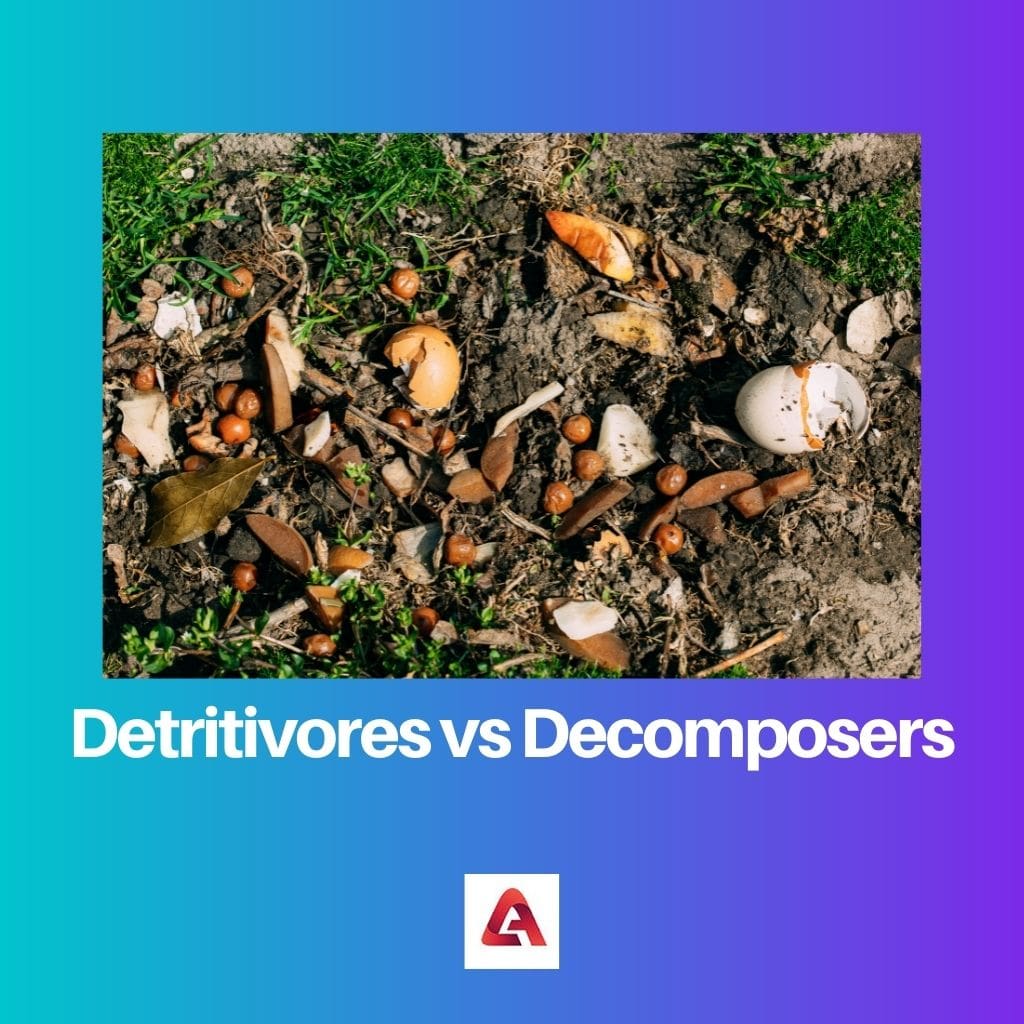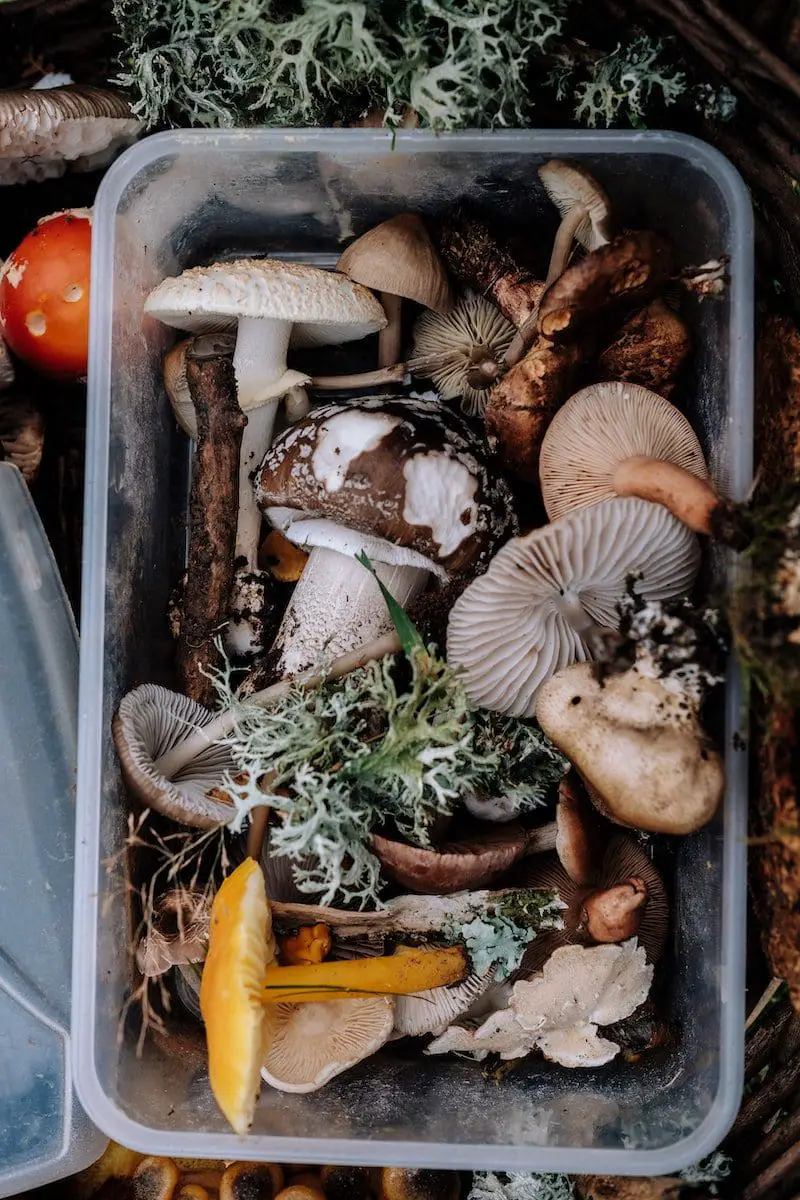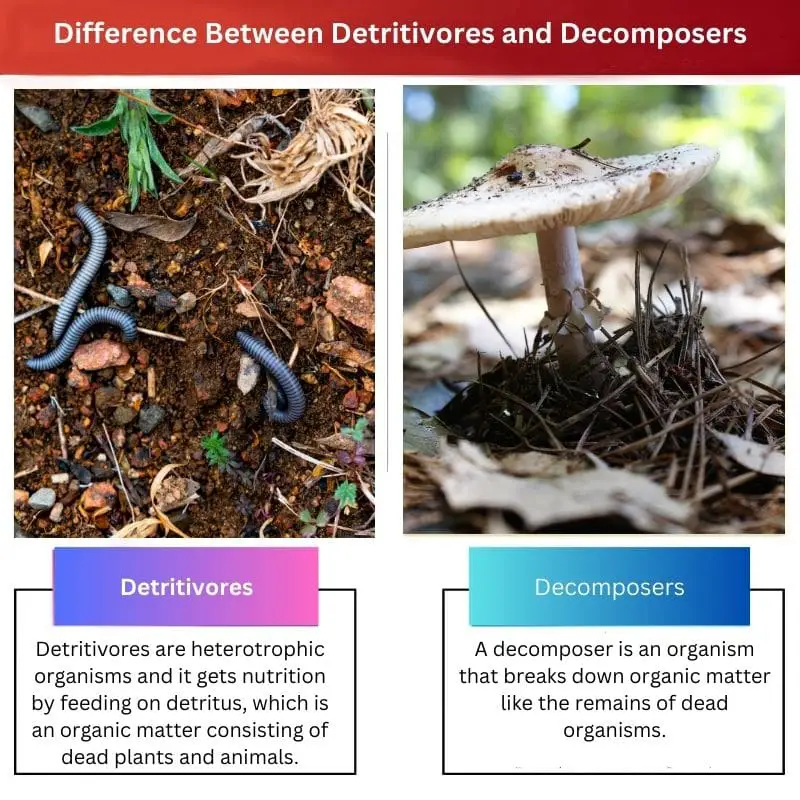Decomposers and Detritivores are living organisms thought to be the same because they have the same diet. But they are not the same; they have different specifications and characteristics, making them very different.
Key Takeaways
- Detritivores are organisms that consume dead organic matter and break it down into smaller particles; decomposers are organisms that break down dead organic matter into simpler compounds through chemical reactions.
- Detritivores include animals like earthworms, woodlice, and millipedes, which ingest and physically break down organic matter; decomposers include microorganisms like bacteria and fungi, which chemically break down organic matter.
- Detritivores convert dead organic matter into feces, which decomposers further break down; decomposers play a critical role in returning nutrients to the soil.
Detritivores vs Decomposers
The difference between Detritivores and Decomposers is that decomposers are microorganisms that decompose organic material, whereas detritivores feed on dead and decompose organic matter by oral ingestion. Also, decomposers are microorganisms with three types of detritivores, scavengers, and saprophytes.

Comparison Table
| Parameter of Comparison | Detritivores | Decomposers |
|---|---|---|
| General | It is one of the three types of decomposers. | It is an organism. |
| Chemical process | Detritivores do not use chemical processes to decompose substances. | Decomposers use chemical processes to decompose substances. |
| The method used for breaking down | It breaks down organic material via oral digestion. | It breaks down organic material by releasing enzymes. |
| Consumption of Organic matter | Detritivores eat organic matter. | Decomposers secrete enzymes for the decaying of the dead. |
| Reason for Consumption | Detritivores consume detritus to obtain energy. | Decomposers’ main role is to break down the organic matter. |
| Organisms | Worms, crabs, etc. | Most bacterias and fungi |
What are Detritivores?
Detritivores are heterotrophic organisms that get nutrition by feeding on detritus, an organic matter consisting of dead plants and animals. Detritivores also use the feeding strategy, which involves the consumption of feces, called coprophagy, to get nutrition.
Also, detritivores break down the organic matter by oral digestion and absorb its nutrients. The maximum types of species, detritivores, don’t have bones, like mites, beetles, butterflies, mollusks, earthworms, woodlice, etc.
Detritivores are also found in marine surroundings; some are crabs, lobsters, echinoderms like sea stars, and cucumbers. Many marine species have similar traits or roles in the ecosystem, like terrestrial ones that live within the sea bed.
Detritivores play an important role in the ecosystem by decomposing dead and decaying materials. They contribute to the most important cycles of the ecosystem, such as the carbon cycle, nitrogen cycle, and phosphorous cycle.
They feed on primary producers, herbivores, and carnivores, which is why they are present throughout all trophic levels in an ecosystem.
Detritivores also contribute to the ecosystem’s energy cycle as detritivores commonly get eaten by secondary consumers, giving energy to the secondary users. They are also important as they remove the dead, which can cause multiple diseases and infections.

What are Decomposers?
A decomposer is an organism that breaks down organic matter like the remains of dead organisms. These organisms are responsible for decomposing the dead, which is important for the ecosystem. It recycles the organic matter present on the earth.
Some examples of decomposers are fungi such as mushrooms, bacteria, etc. Decomposers play a very important part in the ecosystem because they are responsible for breaking down and recycling organic matter.
The decomposers also do this decomposition process for themselves, as they are heterotrophic, and they need the energy to survive, which they get from the organic matter which they decompose.
The dead provides nutrients for decomposers like bacteria and fungi, which they utilize to grow and reproduce.
The side effect of this surviving process is that the organic material and nutrients get cycled throughout the ecosystem as these bacteria and fungi later get consumed by other organisms for survival. Decomposition is a long process, and there are certain stages of decomposition.
When an organism dies, it takes five stages to decompose: Fresh, Bloat Active Decay, Advanced Decay, and Dry/Remains. The two main processes that play an important role in the decomposition are autolysis and putrefaction.
Autolysis is the process in which the organism’s cellular enzymes break down its cells and tissues, and putrefaction is a process in which the microbes grow and reproduce throughout the body.
The five stages are:
- Fresh: In this stage, autolysis and putrefaction begin as soon as the organism’s heart stops beating, resulting in no oxygen consumption in the body and the build-up of carbon dioxide.
- Bloat: In this stage, a buildup of gases occurs due to putrefaction, and the organism appears bloated.
- Active Decay: In this stage, The organism’s body starts losing mass, liquefaction, and disintegration begins. The body starts producing chemicals that cause a very bad smell.
- Advanced Decay: In this stage, most of the mass has already been decomposed, so a very less amount is left, and if the organism is in or on the soil, the surrounding soil will take the required nutrients for plants.
- Dry/Remains: Only dry skin and bones are left in this stage. Plants may grow nearby because of increased nutrients in the surrounding soil. At last, only bones will be left.

Main Differences Between Decomposers and Detritivores
- Decomposers are organisms that decompose organic matter, and detritivores are decomposers that do the same task.
- Decomposers use chemical processes to decompose substances, whereas detritivores do not use chemical processes to decompose substances.
- Decomposers break down organic material by releasing enzymes; that is, they secrete enzymes for decomposition, whereas detritivores break down organic matter by oral digestion, that is, they consume it.
- Decomposers’ main role is to break down the organic matter, whereas detritivores consume it to gain energy, which is important for survival.
- Most bacterias and fungi decompose, whereas boneless creatures like worms and butterflies are detritivores.




